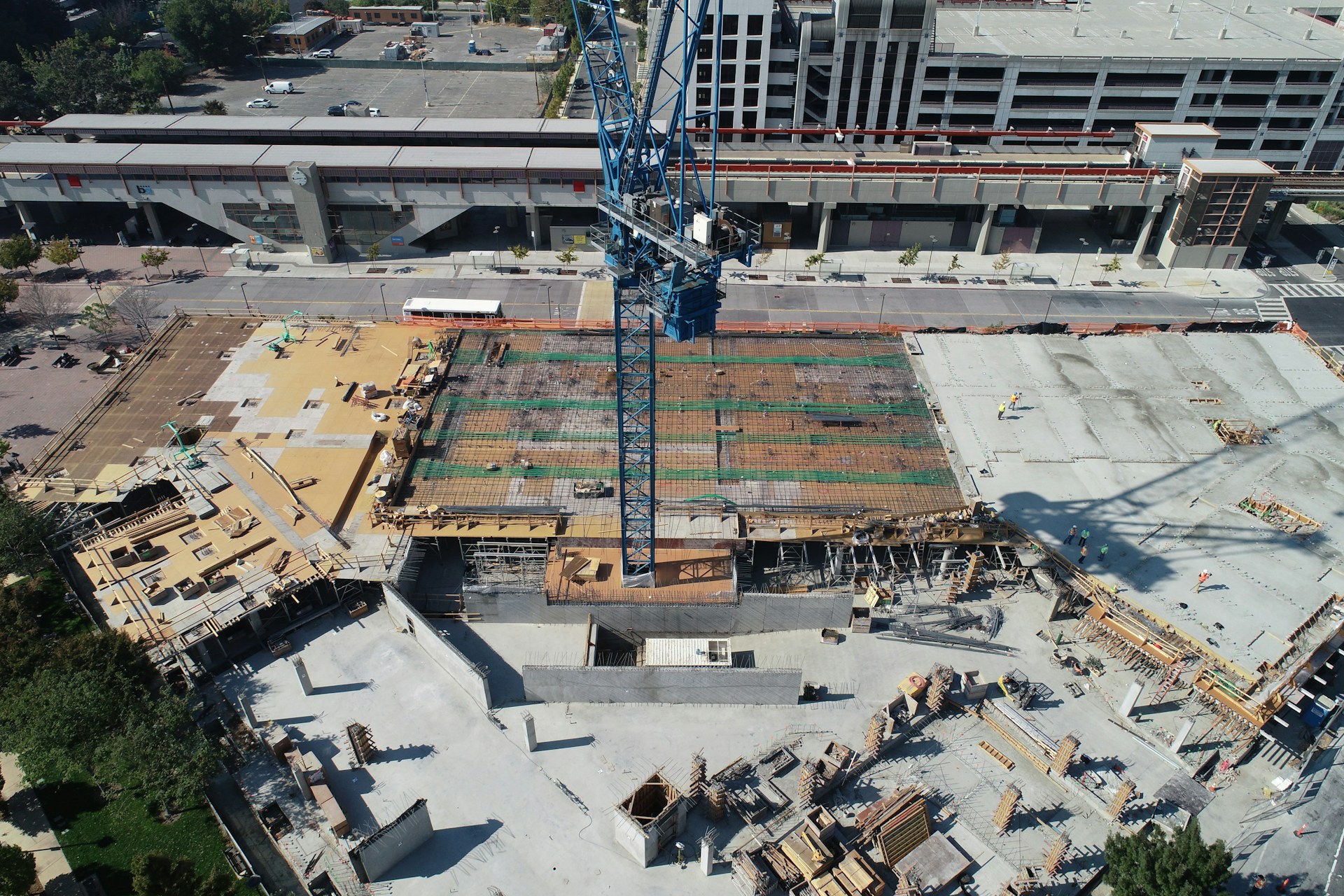
Every towering skyscraper or sturdy bridge you see relies not just on its visible structure, but on the strength of its foundation. Particularly for heavy structures, the role of pile construction is indispensable.
Whether it’s for ensuring long-term reliability or managing weight distribution, well-engineered piling systems provide both stability and durability.
But how exactly does pile construction work, and why is it such a critical aspect of structural engineering? Let’s dig into the details.
What Are Load-Bearing Piles and Why Are They Essential?
Load-bearing piles are the unsung heroes of construction. Their primary function is to transfer the weight of a structure to more stable soil or rock layers deep beneath the ground.
This technique ensures that buildings remain safe and steady, even under considerable pressure.
Unlike shallow foundations, which merely distribute weight close to the surface, load-bearing piles offer much-needed support in areas where the upper soil is weak or inconsistent.
These deep foundations serve as pillars, anchoring buildings securely while preventing settlement or shifting over time.
For example, in coastal or riverfront regions where loose, sandy soil predominates, load-bearing piles ensure the stability needed for safe construction. Without them, the weight of the structure could cause disastrous shifts or even collapse.
Types of Piles Commonly Used in Construction
Pile construction comes in different forms depending on material and application, each offering unique benefits:
1. Concrete Piles
These are perhaps the most frequently used types in modern construction. Pre-cast or cast-in-situ concrete piles are favored for their durability and adaptability, especially for large projects requiring substantial load-bearing capacity.
2. Steel Piles
Steel is a popular choice for deep foundations thanks to its versatility. Steel piles are ideal for projects where high tensile and compressive strength are necessary, such as high-rises or infrastructure projects.
3. Timber Piles
Timber piles, often associated with traditional construction, are still used today in certain situations.
Although less common in urban environments, they’re highly effective in areas where sustainability and lightweight solutions are prioritized. Proper maintenance, including periodic wood piling repair, can extend their lifespan.
Understanding the type of pile best suited for your project is vital. The choice depends on factors such as soil composition, structural load, and environmental considerations.
The Science Behind Deep Foundations
Deep foundations are pivotal in ensuring structural integrity. But how do they work? Simply put, deep foundations distribute the force from a structure’s load to layers of soil or rock much deeper than surface-level foundations could reach.
This not only ensures greater stability but also minimizes the risk of differential settlement—the uneven sinking of a building that can cause damage over time. The design process for deep foundations involves careful planning.
Engineers conduct soil tests to determine foundation depth, pile length, and other critical factors. Precision is everything.
A poorly designed deep foundation could lead to structural instability. Think of deep foundations as the supportive framework for a functional and robust structure. Without them, even the most brilliant architectural designs would be fundamentally flawed.
Structural Engineering and Piling Systems
Structural engineering plays a crucial role in pushing the boundaries of what’s possible in construction while maintaining safety and stability. Piling systems are a case in point.
Piling systems allow engineers to tackle challenging terrains and soil types that would otherwise make construction impossible.
They also provide solutions to critical structural challenges, such as preventing settlement, resisting lateral forces like wind or seismic activity, and managing weight distribution.
With the development of advanced tools and materials, structural engineering continually innovates to optimize the design and installation of pile foundations.
This is particularly evident when dealing with massive loads, where piling systems serve as critical components for ensuring long-term durability.
Why Projects in Poor Soil Conditions Rely on Pile Construction
Not all soil is created equal. Some regions are characterized by loose or unstable soil that cannot support heavy buildings or structures on shallow foundations. This is where pile construction comes to the rescue.
Pile systems transfer weight to more stable layers, bypassing weak surface soil altogether. A great example is their application in waterfront construction, where loose and wet soil wouldn’t otherwise allow for safe building.
Even in inland areas, pile construction helps businesses and developers make the most of sites that might otherwise be unsuitable.
By enhancing the load-bearing capacity of poor soils, construction becomes possible in places where land-use limitations once rendered unviable.
Wood Piling Repair: Ensuring Long-Term Structural Health
Although timber piles offer historic charm and excellent performance, they aren’t invincible. Over time, exposure to moisture, fungi, and pests can degrade wooden piles.
Regular maintenance is essential to preserving their longevity. Proper wood piling repair ensures that timber piles maintain their load-carrying capacity and prevent potential structural failure.
Repair techniques might involve replacing damaged sections, applying protective coatings, or reinforcing weak points with steel or concrete. Frequent inspections can help identify issues early on, ensuring the safety of the structure.
For projects involving timber piles, a proactive approach to repair and preservation is critical. It’s this sort of attention to detail that ensures even traditional materials continue performing well in the face of modern challenges.
The Art and Precision of Foundation Design
Designing the right foundation is as much an art as it is a science. Engineers must consider soil types, loading conditions, and project requirements before deciding on the appropriate piling system.
Precision engineering ensures that each pile is not only installed correctly but also positioned to optimize structural performance. Misaligned or improperly installed piles can lead to catastrophic failures, so meticulous planning and execution are essential.
Once installed, these foundations serve as the unseen yet unshakable backbone of the structure, allowing skyscrapers, bridges, and other ambitious projects to stand tall for decades.
Build Stability, Build Confidence
Pile construction is more than just an engineering solution—it’s the foundation (pun intended) of structural reliability. The strength that lies beneath is what enables the monumental and the enduring.
Whether dealing with challenging soil conditions or designing for massive loads, the expertise of structural engineers and the innovative use of deep foundations make it all possible.
By incorporating advanced techniques and regular maintenance—like wood piling repair and precision-driven design processes—piling systems continue to uphold the structures of the world.
Want to ensure your heavy structure is built on a rock-solid foundation? Start with an expert consultation and invest in a system that will bear the weight of your ambition.




